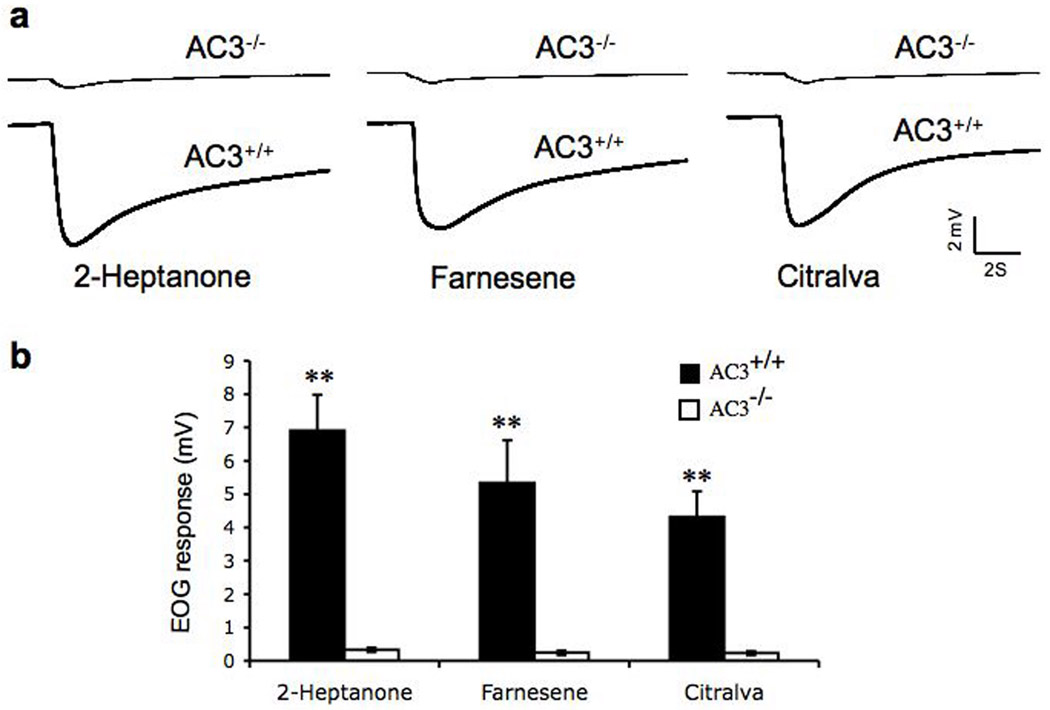Figure 6.
EOG responses evoked by odorant and pheromone are ablated in the MOE of AC3−/− females. (a) Representative EOG responses evoked by 2-heptanone (50 µM), farnesene (500 µM), and citralva (50 µM) respectively, from the MOE of virgin AC3+/+ and AC3−/− females are shown. All agents were diluted in 1× ringer buffer. (b) Summary of the mean EOG amplitudes in response to odorants and pheromones. Significantly greater EOG responses to all agents were exhibited in AC3+/+ (n=6) compared to AC3−/− (n=5) females (all agents p< 0.001). Data are presented as mean ± SEM. **, p < 0.001.

